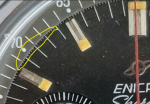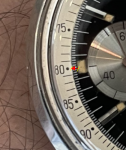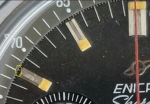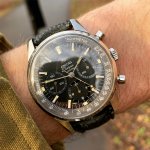I real ly can't put my finger on it but the hands looks wrong in combination...
This is what I think looks odd for this watch:
- the hour hand looks too short
- red chrono hand looks wrong
- Seapearl back lid
- wrong crown
https://www.ebay.com/itm/194463457916?hash=item2d46ece27c:g:5VwAAOSwNathdcyv

This is what I think looks odd for this watch:
- the hour hand looks too short
- red chrono hand looks wrong
- Seapearl back lid
- wrong crown
https://www.ebay.com/itm/194463457916?hash=item2d46ece27c:g:5VwAAOSwNathdcyv









